PART.2
No. 2 Tomb (or M2) is a drum-shaped, brick-built catacomb featuring five segments, just like the No.1 Tomb. It is 12.64 meters long, 5.9 meters wide and 1.6 meters high.
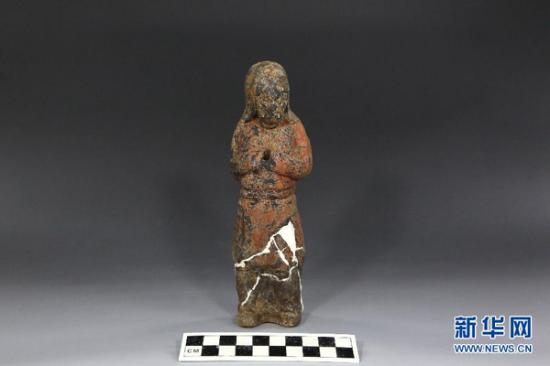
A pottery figurine excavated from the tomb of Yang Guang, or Emperor Yang of Sui, the second and last monarch of the short-lived Sui Dynasty (581-618)
It contains more than 200 rare treasures, the most precious of which include a jade tablet, a 16-chime set of bells and 20 series of L-shaped jade plates -- a kind of ancient Chinese percussion instrument. A set of women's headgear shows particularly excellent workmanship.
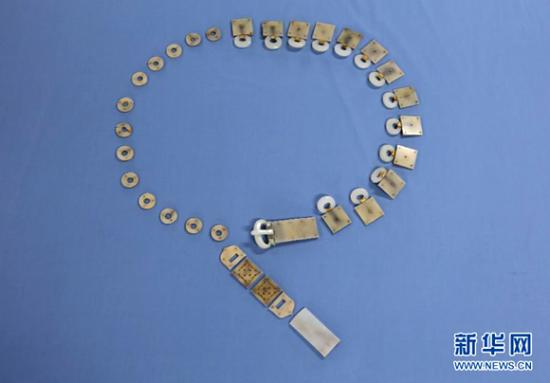
A gold-jade belt excavated from the tomb of Yang Guang, or Emperor Yang of Sui, the second and last monarch of the short-lived Sui Dynasty (581-618)
No. 1 Tomb is located in the center of the mound and No. 2 Tomb on its southeastern edge. Archaeologists believe No. 2 was built later than No. 1, according to its location and internal structure. Identification of two male teeth and a female's skeletal remains also show that Emperor Yang was about 50 years old at the time of his death. Empress Xiao is thought to have been around 56 years of age and 1.5 meters tall.
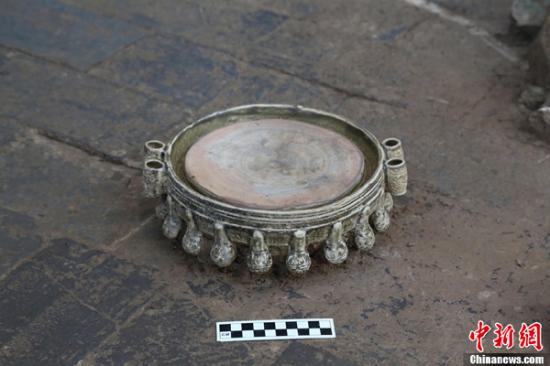
A porcelain inkslab excavated from the tomb of Empress Xiao, the wife of Emperor Yang Guang of Sui Dynasty (581-618)
Tong Mingkang, vice-director of the State Administration of Cultural Heritage, spoke highly of the archaeological achievement at the press conference. Continued exploration and further study of the ancient tomb and its history are needed, he said.
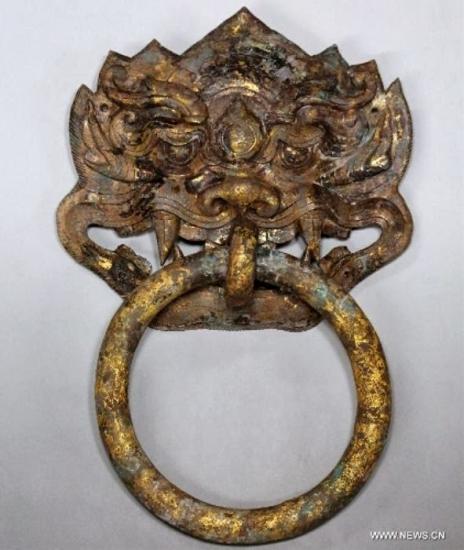
A knocker-holder excavated from the tomb of Yang Guang, or Emperor Yang of Sui, the second and last monarch of the short-lived Sui Dynasty (581-618)
Since its discovery in April, the tomb has drawn nationwide attention. The administration immediately sent archaeologists and historians to the site to carry out intensive research.
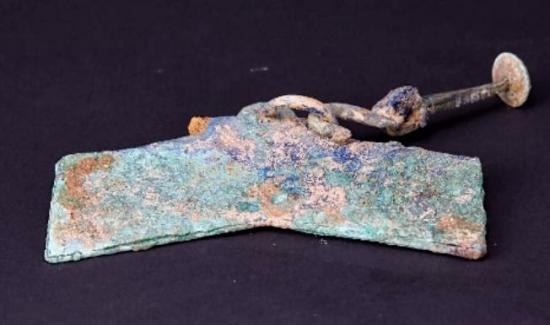
A bronze percussion instrument called "Qing" excavated from the tomb of Empress Xiao, the wife of Emperor Yang Guang of Sui Dynasty (581-618)
Meanwhile, archeologists said that the latest discovery formed proof that yet another mausoleum some six kilometers away, regarded as Yang's burial site since the Qing Dynasty (1644-1911), was in fact a fake.
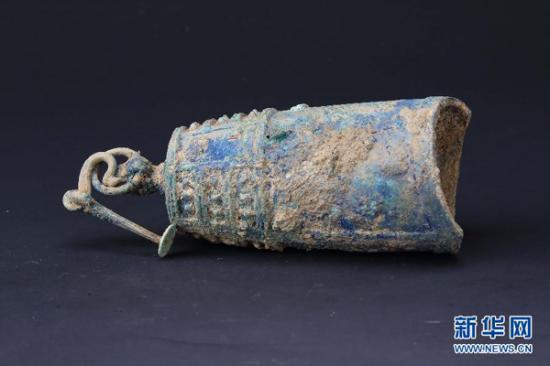
A bronze bell excavated from the tomb of Empress Xiao, the wife of Emperor Yang Guang of Sui Dynasty (581-618)
According to Chinese historians, Yang's tyrannical behavior brought on the demise of the Sui Dynasty, but the emperor did also complete several great construction projects during his reign, including the Grand Canal and the reconstruction of several parts of the Great Wall.